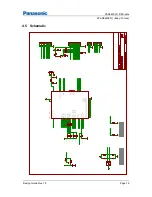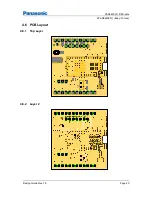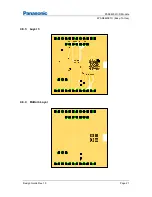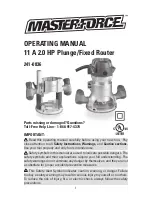
PAN9420 Wi-Fi Module
3 PAN9420 Module
Design Guide Rev. 1.0
Page 11
Impact of Placement on the Antenna Radiation Pattern
The placement of the module, the surrounding material, and the customer
components might have an impact on the radiation pattern of the on-board
antenna.
It is recommended to verify the perfect position of the module in the target
application before fixing the design. In some applications it could be
reasonable to use an external antenna to handle application caused
placement restrictions.
For the use of an external antenna refer to section
3.8.1 External Antenna.
3.7 Power Supply
The following requirements must be met:
The supply voltage must be free of AC ripple voltage (for example from a battery or a low
noise regulator output). For noisy supply voltages, provide a decoupling circuit (for example
a ferrite in series connection and a bypass capacitor to ground of at least 47
µF directly at
the module).
The supply voltage should not be exceedingly high or reversed. It should not carry noise
and/or spikes.
Make sure that the power-up sequence meets the requirements mentioned in the PAN9420
Product Specification.
The supply current of VDD (3.3V)
must be limited to maximal 1 A.
3.8 RF Path
3.8.1 External Antenna
Antenna Warning
The PAN9420 is tested with a standard U.FL connector and with the antenna
listed in the regulatory and certification chapter of the PAN9420 Product
Specification
. When integrated into the OEM’s product, these fixed antennas
require installation preventing end users from replacing them with
non-approved antennas. Any antenna not in the regulatory and certification
chapter of the PAN9420 Product Specification must be tested to comply with
FCC Section 15.203 for unique antenna connectors and with Section 15.247
for emissions.
The PAN9420
module has a 50
RF pin (SMD pad). Connect an external antenna directly or
via a connector (e.g. U.FL) with RF trace to this RF pin.
This RF trace shall be matched to 50
3.8.2 RF Trace.












































